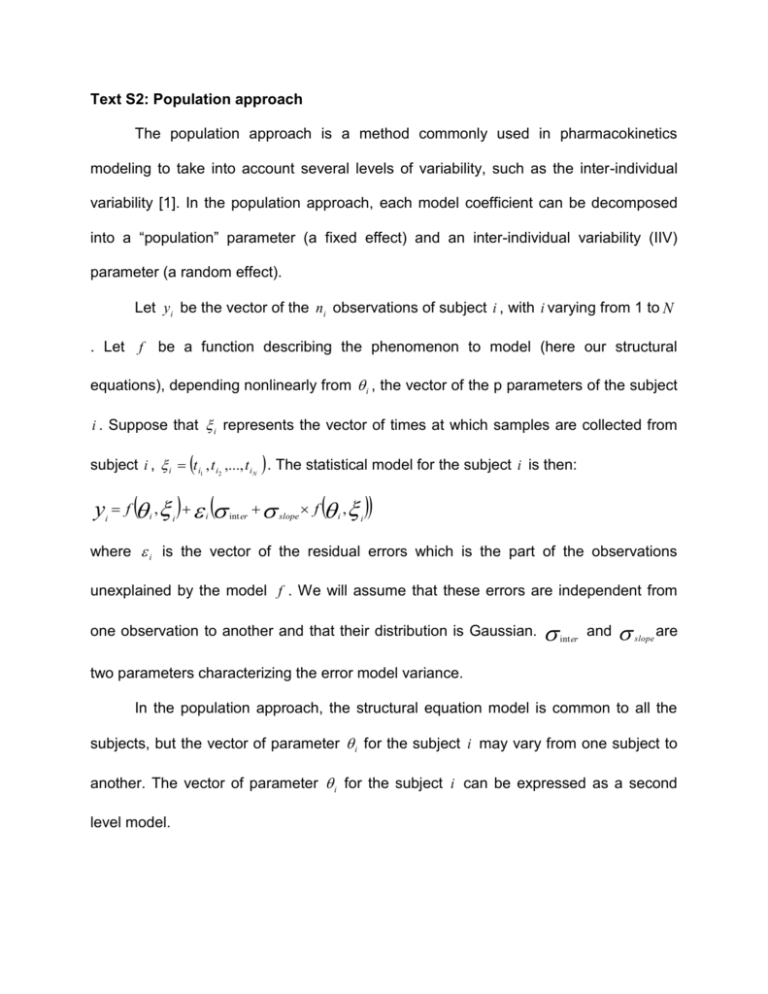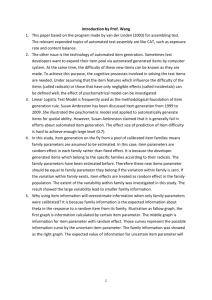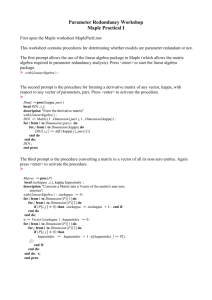Text S2: Population approach The population approach is a method
advertisement

Text S2: Population approach The population approach is a method commonly used in pharmacokinetics modeling to take into account several levels of variability, such as the inter-individual variability [1]. In the population approach, each model coefficient can be decomposed into a “population” parameter (a fixed effect) and an inter-individual variability (IIV) parameter (a random effect). Let yi be the vector of the ni observations of subject i , with i varying from 1 to N . Let f be a function describing the phenomenon to model (here our structural equations), depending nonlinearly from i , the vector of the p parameters of the subject i . Suppose that i represents the vector of times at which samples are collected from subject i , i t i1 , t i2 ,..., t iN . The statistical model for the subject i is then: y f , i i i i int er slope f , i i where i is the vector of the residual errors which is the part of the observations unexplained by the model f . We will assume that these errors are independent from one observation to another and that their distribution is Gaussian. int er and slope are two parameters characterizing the error model variance. In the population approach, the structural equation model is common to all the subjects, but the vector of parameter i for the subject i may vary from one subject to another. The vector of parameter i for the subject i can be expressed as a second level model. Individual parameters were simulated as e i i pop , where i is the individual parameter for the subject i , pop and i are the population parameter and the random effect pop and were drawn from lognormal distributions ln N , 2 and ln N , 2 respectively, where x and x2 were the mean and variance estimated in previous works [2,3]. i was drawn from a Gaussian distribution N 0, 2 , where represents the inter-individual variability of the parameter . References 1. Sheiner LB, Steimer JL (2000) Pharmacokinetic/pharmacodynamic modeling in drug development. Annu Rev Pharmacol Toxicol 40: 67-95. 2. Canini L, Carrat F (2011) Population modeling of influenza A/H1N1 virus kinetics and symptom dynamics. J Virol 85: 2764-2770. 3. Wattanagoon Y, Stepniewska K, Lindegardh N, Pukrittayakamee S, Silachamroon U, et al. (2009) Pharmacokinetics of high-dose oseltamivir in healthy volunteers. Antimicrob Agents Chemother 53: 945-952.











